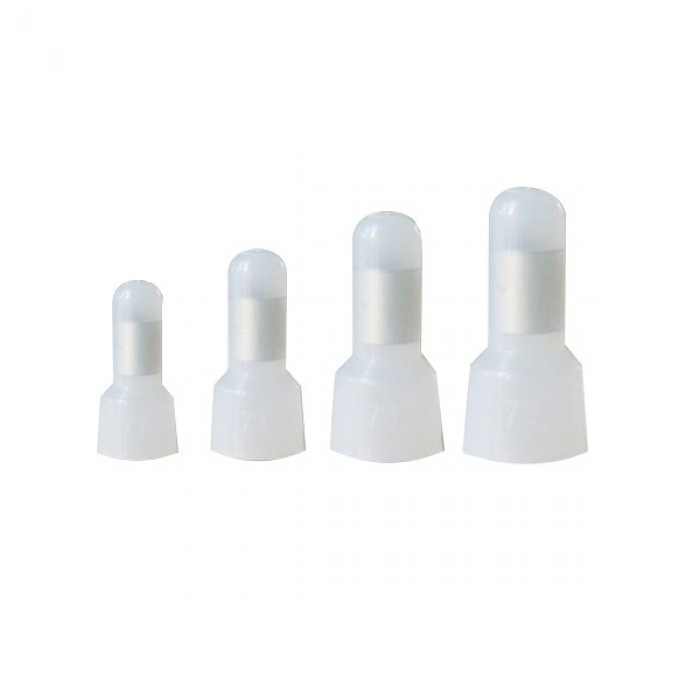

C2 End Cap Connector
Twist-on wire connectors are available in a variety of sizes and shapes. While their exterior covering is typically made from insulating plastic, their means of connection is a tapered coiled metal insert, which threads onto the wires and holds them securely. When such a connector is twisted onto the stripped ends of wires, the wires are drawn into the connector's metal insert and squeezed together inside it. Electrical continuity is maintained by both the direct twisted wire-to-wire contact and by contact with the metal insert.
Twist-on wire connectors are typically installed by hand. They may have external grooves to make them easier to handle and apply. Winglike extensions are commonly molded into higher quality connectors to reduce operator muscle fatigue when installing a large number of the connectors. Such extensions also allow these connectors to be installed with a common nut driver or a specialized tool.
Twist-on wire connectors are commonly color-coded to indicate the connector size and, hence, their capacity.[2] They are commonly used as an alternative to terminal blocks or the soldering of conductors together, since they are quicker to install and, unlike soldered connections, allow easy subsequent removal for future modifications.
Twist-on connectors are not often used on wire gauges thicker than AWG #10 (5.26 mm²), because such solid wires are too stiff to be reliably connected with this method. Instead, set screw connectors, clamps or crimp connectors are used.
Specialized versions[edit]
Ceramic twist-on connectors are made for high-temperature applications, such as heating appliances.
Ordinary twist-on connectors are not rated for wet use (such as exposed outdoors or buried underground). Special gel-filled connectors must be used in this circumstance.
Twist-on wire connectors are not generally recommended for use with aluminum wire.[3] The US Consumer Product Safety Commission does not approve of their use with aluminum wire, instead only approving a specialized crimp connector and preliminarily approving a specialized screw terminal.[4] In spite of this, several companies manufacture twist-on connectors which they claim are designed specifically for, and rated for, use with aluminum conductors.[5]
Special feedthrough twist-on wire connectors differ from standard wire connectors in that they have an additional opening at the top of the insulated cap. This allows a single-conductor bare wire to be pushed through the hole, forming a "pigtail" section which can be attached to a grounding screw. These feedthrough connectors are typically green, and are also called "screw-on grounding connectors".
Material : Nylon
Metal : AluminiumWeight : 150 Gram
